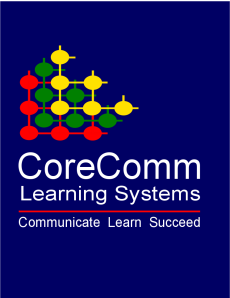
Data-Driven Learning.
Differentiated Training.

Data-Driven Learning.
Differentiated Training.
HR Resources
Articles & Use-Cases
Here are HR articles and Use-Case links designed to empower professionals in the field. Whether you're seeking insights on best practices and insights in human resources, these articles and use-cases provide valuable information to enhance your knowledge base. Dive in to discover expert advice, innovative strategies, and real-world examples that can help you navigate the complexities of HR as well as communication, with confidence.
Article Series
This case highlights the importance of HR departments maintaining a strategic focus on business fundamentals and demonstrating their economic value to the organization, especially during challenging financial times




The Human Resource Department Fantasy
Kenji Yamamoto’s Human Resource department didn’t make it
through the reorganization intact. A confident director of the HRD, Kenji had a
smooth running operation. Only recently, the HR department’s executive advisory
committee had evaluated and approved a new corporate executive development
program. Kenji seemed to be doing all that could be expected of a director of a
Fortune 500 company.
A capital-intensive organization, this company had a
relatively small workforce. Employees who were selected for participation in
HRD programs immediately found themselves on the fast track, receiving quick
promotions and generous rewards for their efforts.
The HR department enjoyed
being part of and promoting the good years during the bubble economy. Years
ago, Kenji purposefully had chosen to maintain a supportive role and a
“corporate perk” atmosphere of his HR department. He handled his leadership role
with a blend of dignity and celebration, and his department had been successful
for some time.
Then the company took a sudden nosedive, and Kenji’s seemingly strong and impervious department went down with it. Easy growth had caused many of the company’s operations to become soft and over-grown—it doesn’t take long. Kenji’s department, as a promoter of good times, had little to offer his company when it encountered financially difficult times.

In less than 6 months, Kenji’s highly polished staff of ten was reduced to Kenji and one administrative assistant. During the corporate wide reduction in the workforce, it was not clear to top management that the HR department could address the fundamental issues of the business. And in such times, fundamentals are all that matter
Even if the HR department had focused on the economics of
the business, it probably would have been somewhat reduced in size. Without
exception, all departments had experienced cuts in staff, but what hurt the
most was that the goals of the HR department weren’t really given serious
consideration when the cuts were made. Kenji had believed all along that his
department was making important contributions to the company.
Now he suddenly came face-to-face with management’s
perception of his department’s minimal worth and contribution to the company.
Ironically, just 2-3 months before, Kenji had emphatically rejected an offer
from an expert consultant in impact and financial assessment to help him and
his assistant talk to top management about the economics of the HR department
and impact of their training programs. Kenji confidently reported to the
consultant that his department received wonderful support from top management.
Further, he thought that the discussion about financial contributions of HRD
was not necessary. When the HR department and Kenji finally did hear about it’s
worth from top management, it was too late. Kenji’s perception of top
management’s support for the HRD department had been a fantasy.
For a free consultation on how your organization can start to develop a focused and measured training program, delivering the benefits you need now, contact CoreComm Learning Systems today.
Four common myths have persisted in the Human Resource
Development (HRD) field, potentially hindering its effectiveness and perceived
value within organizations.
1.
Social Pressure as HRD Basis
Myth: HRD programs are implemented due to social pressure or
trends.
2.
Managerial Indifference to HRD
Myth: Most managers don't care about HRD.
3. HRD as Excessive Cost
Myth: HRD is too expensive.
4. Unquantifiable HRD Benefits
Myth: HRD benefits cannot be measured or quantified.




The Human Resource Department Fantasy
A number of value-laden myths have entered the HRD
profession. These myths may have been partially the result of HRD’s having
taken on too many “it feels good” goals without performing a thorough
performance and work analysis to back up their HRD programs.
Some myths that
have haunted HRD include:
1. Social pressure is the basis of HRD
2. Managers
don’t care about HRD
3. HRD costs too much
4. You can’t quantify/measure the
benefits of HRD
These myths should be exploded. Hard economic thinking and
even harder planning are what is required, not mythology. HRD professionals
should be businesspersons first and HRD specialists second (everything
important in business and industry is evaluated). This shift in perspective is
the first step in exploding the HRD myths. The four HRD myths will disintegrate
when the transition to thorough performance analysis and financial assessment
becomes commonplace.
Myth 1. Social Pressure Is The Basis of HRD.
A quick look
around Kenji’s (and your?) corporate world will reveal organization development
interventions, personnel training and development programs, and other HR
efforts that were put into place because “everyone else is doing it.” Perhaps
some companies get trapped in this game in the same way parents are trapped by
their children’s wanting things because other children have them. Perhaps some
HRD managers have used such childish threats with management as “the company
across the street has and so should we.”
We have heard talk within the HRD profession about “employee
rights to development,” along with statements that “HRD is a corporate perk.”
This kind of rhetoric seems to suggest that social pressure is the basis of
HRD. But isn’t it interesting that HRD professionals in organizations that
strongly support HRD programs rarely, if ever, use social pressure? Most
organizational decision makers who actively support HRD view it in terms of the
business, the core work processes, the outcomes, and anticipating economic
gains or averting economic risks.
Myth 2. Most Managers Do Not Care About HRD
Because so few
managers defend their HR departments, ask for help, or sing their praises, HRD
professionals could easily come to believe that this myth must be true.
Simultaneously, the same managers consult with others in the company about such
important issues as developing workforce expertise, motivation, and aptitude
and how to design work so people can be more effective in their jobs.
Never make the mistake of confusing management’s caring
about HRD issues with their caring about the HRD department. Furthermore, I
urge to acknowledge that the hardworking managers in your company put
themselves on the line every day. Right or wrong, most managers will rely on
what they believe to be their best and most trusted sources of help. Even
though your HRD department may not have earned such “best” or “trusted” labels,
this does not mean that most managers don’t care about HRD. Managers do care about
HRD. But to be a “best” and “trusted” source of know-how requires that the HRD
department to have a credible HRD process, including a results measurement and
assessment system.
Myth 3. HRD Costs Too Much
Good HRD generally costs a fair
amount of money. Most worthwhile projects in an organization cost a fair amount
of money. Usually management decides to spend available dollars on equipment,
services, and projects that will give it the best return on investment (ROI).
Whenever something must be purchased that apparently will have little effect on
the business, management will request the one with the lowest price. The
following example will have a familiar ring: if low quality mailing envelopes
will do the job, management tends to say, “Get them as cheaply as you can.” If
these inexpensive envelopes later stick together or will not feed through the
postage machine, or if they make the organization look tacky in the eyes of
customers, management will tend to say “Stop buying such junk.”
Conversely, if
the most expensive envelopes are the kind that seal automatically and thus
increase output or if they catch the attention of potential customers and bring
increased sales, management will tend to say “Get a good price if you can, but
we want the best.” Cost figures by themselves are irreverent.
Reviewing HRD costs without also reviewing the associated
benefits is not smart. Analyzing what you get for your money is smart. What
most HRD managers fail to realize is that organizational decision makers
usually focus only on HRD costs. When they lack information about the economic
benefits of HRD, many decision makers decide consciously or unconsciously that
a program is just another HRD program- just as an envelope is only an envelope.
“So get the cheapest one.”
Myth 4. You Cannot Quantify/ Measure The Benefits of HRD
Listening to people find excuses why something cannot be done is always
interesting. Rationalizing that the benefits of HRD cannot be quantified or
measured has kept the HRD profession in the dark ages of organizational
performance. Do you suppose that management knows how many products it will
sell next year? Of course not. If management knew the exact figures ahead of
time, it would make exactly that many products. But because management does not
know how many products it will sell, it gathers the best estimates it can find
and makes its decision without the satisfaction of knowing it is right. This
process takes knowledge of past results, intelligence, and guts—not perfection.
Likewise, a record of assessed benefits, a little more intelligence, and a lot
more guts on the part of HRD professionals will explode this last myth.
There is a strong possibility that all four of these myths have arisen from the inside of the HRD profession. If decision makers have also learned these HRD myths, they generally learn them form the HRD people. Executives, as masters of change and opportunity, have the right to expect HRD departments to join them in their struggle to achieve quality and profitability. Most decision makers are not enemies of HR departments. They want to be business partners and to reap the added value that HRD can provide to the organization. All four HRD myths stand in the way of this partnership.
In today’s cost and performance environment, the HRD
professional must take necessary steps to focus on their organization’s core
goals, develop an effective assessment system, ensure the best ROI and
establish a record of proven assessed benefits.
For a free consultation on how your organization can start
to develop a focused and measured training program, contact CoreComm Learning
Systems today.
CoreComm Learning System Use Cases
Tanaka-san, an employee at a Japanese IT company, initially
struggled with English communication, impacting his TOEIC™ score and career
progression. Tanaka-san enrolled in the CoreComm course to address his
English language challenges.
The CoreComm course effectively addressed Tanaka-san's
English language barriers, transforming his approach to English communication
and opening new career opportunities in the IT sector.




I Don't Like English
On the first day of the class, Tanaka-san sat at the table with his arms crossed a sharp frown.He was asked, “Is communicating in English difficult?” “Yes, I don’t like it”. He was asked “Why?” The student said English vocabulary was difficult to remember, grammar was difficult and he couldn’t think in English, translating all the time was too troublesome! In addition, because of this, he couldn’t communicate well, he couldn’t improve his TOEIC™ score and so his career had stopped.He then took the CoreComm course and his situation changed.Results
On the last day, at the end of class, Tanaka-san came up to say good-bye to the trainer. He then shook the trainer’s hand, and would not stop shaking his hand. Tanaka-san said “Thank you, thank you so much. Last night, I experienced Japanese like a foreign language. I walked through my office, but I couldn’t understand my colleagues speaking Japanese. For the first time, I actually started thinking in English. Japanese was a foreign language to me- I've never experienced that before. Thank you."
Now I Can Think In English
"My whole life, my Japanese English teachers and my foreign English teachers said the same thing ‘Think in English, think in English’. But I didn’t know how. But now, I can do, I can think in English. Thank you” The trainer saw tears in Tanaka-san’s eyes. Tears of joy and confidence.He said that he could now think directly in English. This made using English much easier for him. He also said the he now had the communication skills to talk to others more confidently and that he could re-start his career.
For a free consultation on how your organization can start
to develop a focused and measured training program, contact CoreComm Learning
Systems today.

A Japanese cement company faced challenges with key managers
selected for overseas assignments who struggled with effective English
communication despite extensive language training.
The company implemented the CoreComm System to address these
communication challenges. The
CoreComm Learning System effectively addressed the company's English
communication challenges, preparing managers and their families for successful
overseas assignments and improving business outcomes.




Still Can't Communicate
This client had a problem with the communication skills of a
number of key managers who had been chosen for overseas assignment.
They had already taken many hours (over 250 hours) of
English lessons. They were what many companies tend to use- 1 or 2 hour English
conversation classes, after work in the evening. The managers found the lessons
boring, not effective and not motivating. Another problem was, that many of
these managers still could not communicate effectively in English. These
managers were being sent overseas to other Asian countries, and were expected
to manage the local staff, while also being responsible for increasing business
and market share. Yet, could not communicate effectively, experienced high
levels of stress when communicating and did not want to do it.
Both the client company and the individual students were
very nervous about the upcoming overseas assignments. Because each knew that
the managers would not be able to function. And so, they continued using the
same English lessons, hoping the situation would improve. It didn’t.
Then the client used the CoreComm System.
The student’s ability immediately changed. By the end of the
course, the students were communicating more accurately what they wanted to
say, using clarifying and confirming skills as part of their natural style, and
were thinking directly in English.
Then the client used the CoreComm System.
The student’s ability immediately changed. By the end of the
course, the students were communicating more accurately what they wanted to
say, using clarifying and confirming skills as part of their natural style, and
were thinking directly in English.
Results
The students reported that they now felt confident in their
communication skills, felt less stress when communicating and were seeing
direct improvements in all key skills including reading, writing, listening and
speaking accuracy. They also reported being able to expand on their
conversations in a more logical and natural way which would greatly help them
to achieve their assignment goals of managing local staff more professionally
and increasing market share.
My Kids Are Top of Their Class!
In addition, one of the students scheduled for overseas
assignment was very worried about how his wife (who did not speak English well
and had never liked studying English) and his two children (who were both
struggling in their English classes at school- usually at the bottom of their
class) would survive using English in a foreign country. So, he introduced them
to the CoreComm Learning System.
After using the CoreComm System, he and his
family were now studying English together as a family. His wife enjoyed
learning and speaking English and his two children were now improving in
English, so much that they were now becoming some of the best students in their
school English classes.
All managers reported a more successful overseas assignment
due to their learning experience with the CoreComm Learning System.
For a free consultation on how your organization can start
to develop a focused and measured training program, contact CoreComm Learning
Systems today.

A group of engineers selected for 2-year overseas assignments in Europe and Asia were unable to communicate effectively despite over 250+ hours of weekly English lessons. The imminent departure to their overseas assignment was causing panic for the HR Director.
The HR Director implemented CoreComm's
intensive approach and successfully addressed the urgent need for improved English
communication skills, surpassing the results of previous long-term language
training efforts. The HR Director was quoted saying "This is exactly the training and development my teams needed!"




HR Director Shocked
A group of engineers had been chosen for 2-year overseas
assignments to Europe and Asia.
The group had been given over 250 hours of English lessons
and Business English lessons at their company. The lessons were usually once or
twice a week. But after many months, they still couldn’t communicate
effectively in English. And the departure was very close. The Human Resource
Director was extremely worried and upset. The company had chosen different
lesson providers to get a variety of courses and teaching styles. The Director,
a native Japanese speaker, could also speak English and German fluently. She
was so shocked by the engineer’s lack of language ability and communication
skills after taking so many classes. This was a panic situation.
The Director heard about CoreComm and scheduled a
consultation meeting with the CoreComm team. After establishing the
student’s, the company’s needs, she agreed to go ahead with the seminar. But,
because CoreComm was so unique, she decided to observe the class everyday. She
began to do her work from inside the training room. This way, she would be able
to see everything that the students experienced and learned.
Results
When the course finished, the Director and the CoreComm team
had a meeting to discuss the results of the seminar. The Director, who speaks 3
languages fluently, said how amazed she was with the student’s communication
abilities in just 5 days. She explained that the students told her they could
now communicate much more accurately and confidently, she also agreed with the
students.
The Director said that she now felt very confident to send
these engineers on their overseas assignments, knowing that they could now
communicate accurately, effectively and with confidence in any situation. She
said she was so shocked to see such improvement so quickly and how she wished
she had requested the CoreComm courses at the beginning of the training.
The Director also said that after seeing how the students
learn how to learn, learn how to communicate and how effective the course
really is that “CoreComm is exactly what Japanese people need!”
For a free consultation on how your organization can start
to develop a focused and measured training program, contact CoreComm Learning
Systems today.
A team of 10 recent recruits from the Japan branch of a
global European IT company completed the initial phase of language and
communication training. The team attended the company’s global
training conference in Europe – training crucial to their career success. However,
when they returned to Japan, the global training director told the Japan branch
HR director that the team’s communication, language, and interaction skills were ineffective for international events. The Japan branch HR Director was told ‘Do
not send them back- they can’t communicate…’.
The HR director deployed The CoreComm Learning System, which transformed a team facing
career setbacks into international communication leaders, exceeding
expectations and setting new standards for global performance within the
company.




"Do Not Send Them Back!"
A team of 10 recent recruits from the Japan branch of a
global European IT company completed the initial phase of a language and
communication training program. The team then attended the company’s global
training conference in Europe – training crucial to their career success. However,
when they returned to Japan, the global training director told the Japan branch
HR Director that the team’s communication, language, and interaction skills were
too low and ineffective for further
participation in international events. The Japan branch HR Director was told ‘Do
not send them back- they can’t communicate…’.
The International Training Director told the Japanese team
“don’t come back".
The global European IT company’s Japan branch had finished
the language and communication training program for 10 recent recruits. The
team had been sent overseas to complete their global training. They were
scheduled to go back for the second part of the global training in the late
fall. This training was very important for their future promotion and
development. Also, it was important for the Japan branch to make sure the
branch was represented at the global level.
But, when the team of 10 came back, the global training
director told the Japan branch, ‘Do not send the team back- they can’t
communicate with others, their language skills, communication skills and
interaction skills are too low and very disappointing. We will send the
information and they can study on their own time. Please do not send them to
any future international meetings, conferences or training”.
The Human Resource Director was shocked. She had to tell the
team this terrible news. The team was so shocked when they were told they would
not be allowed to take part in any future training courses or international
meetings. However, the Human Resource Director was informed there may be a way
to help the team, the system was called CoreComm. The Director had a
consultation meetings, and asked the CoreComm team to help them.
The students were amazed. Management was amazed.
Results
A the end of the CoreComm course, the team of 10 said how
surprised they were at how much they were able to improve their language and
communication skills. They also realized they were not translating everything
from English to Japanese back to English. Now they were thinking directly in
English. Their listening, speaking, reading and writing speeds had all
increased. They were also shocked how much more confidently they could
communicate, in a natural way, and how they were able to actually communicate
what they really wanted to say, with less stress.
The Team was then given one more chance to join the
international training program. But this time, they were prepared. Half of the
team went for the 2nd round of training in the U.S., the other half of the team
went to Europe to complete their training.
During the training, the international teams in both the
U.S. and Europe had to compete in a presentation competition. The Japanese team
was competing against many other international teams, including native English
speaking countries (i.e. Canada, U.K., Australia, U.S., Singapore). But, for
the first time in the company’s history, the same team won both presentation
competitions –Japan. In addition 3 of the 10 team members were chosen to be
International Team Leaders - the same group that had been told they couldn't communicate, and were not allowed to participate in further training.
But with the CoreComm Learning System, were able to improve their language and
communication skills to become international communication and team leaders.
The International H.R. Director and the International
Training Director were amazed and very pleased.
For a free consultation on how your organization can start
to develop a focused and measured training program, contact CoreComm Learning
Systems today.


Many students and professionals take the TOEIC™ Test, taking many months and years to reach their goals, with many students giving up.
For the CoreComm Learning System™, our client's satisfaction and success is first. We are so confident that our courses and business seminars will help you achieve your goals that we offer a 100% money back guarantee.
Average toeic test score increase*
increased
fluency speed
Increased
reading speed
listening & Pronunciation improvement
*Individual results may vary

CoreComm Learning is here to provide you with more information, answer any questions you may have and help you create an effective training solution to help you develop your Global Communication skills today.

Contact us today